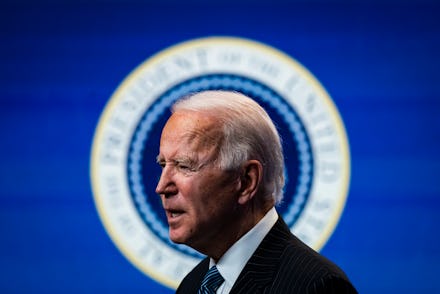Biden issued a series of climate executive orders — but he still won't ban fracking

President Biden has been promising one of the most ambitious and aggressive environmental agendas in history, and on Wednesday he took the biggest step yet toward achieving that goal. In a series of executive orders, Biden declared that climate change is a national security priority, making addressing the matter a central focus of the federal government. He also signed orders that will aim to conserve at least 30% of all federal land and oceans by 2030 and, perhaps most significantly, halting any new oil and gas leases on public land and water.
Biden's order regarding oil leases on federally owned land is not only a major departure from the Trump administration but also undoes some of the more significant changes that former President Donald Trump implemented while in office. Trump had auctioned off millions of acres of land to oil and gas companies, allowing them to explore and drill in areas that were previously protected, including Alaska's Arctic National Wildlife Refuge (ANWR). Biden's executive order places a pause on all new leases for drilling on federal land and will require all existing leases be reviewed before allowing them to continue. Instead of expanding the fossil fuel sources, Biden's order instructs the Interior Department to seek opportunities for expanding renewable energy projects on federally owned land and water.
While the order represents a major change in how the federal government will handle oil extraction on its land, it does not go far enough for some advocates. The order does not explicitly ban coal leases on federal lands, even though coal reliance has largely been in decline in recent years. Biden also disappointed climate activists when he announced unequivocally that “we're not going to ban fracking" while speaking about the executive orders Wednesday.
In addition to the order regarding drilling on federal land, Biden also signed an executive order solidifying his campaign promise to conserve 30% of U.S. land and ocean waters by 2030. The plan, known as "30 by 30," follows the scientific theory that conserving 30% of land and water is required to protect 75% of the planet's species by preserving their ecosystems and strengthening biodiversity. Currently, 26% of all U.S. ocean water is protected, but just 12% of the country's land enjoys conservation status.
The executive orders signed Wednesday follow the similarly ambitious orders that Biden enacted on his first day in office. On Jan. 20, Biden recommitted the U.S. to the Paris Agreement and canceled the development of the controversial Keystone XL pipeline. Biden still has a considerable amount of work to do to make good on his overall climate change agenda, including the massive challenge of getting his proposed $2 trillion plan to shift the country to a green economy and achieve net-zero emissions by 2050 through a split Congress, but the executive orders represent good immediate first steps. There’s also his pledge to convert the entire federal car fleet to electric vehicles.
And, of course, there's an extra bit of satisfaction watching Biden use executive orders, the same tool that Trump relied on to upend environmental protection rules, to wipe out the previous administration's achievements. Easy come, easy go.